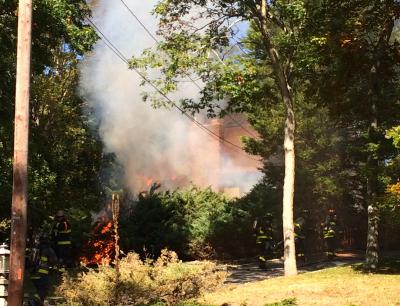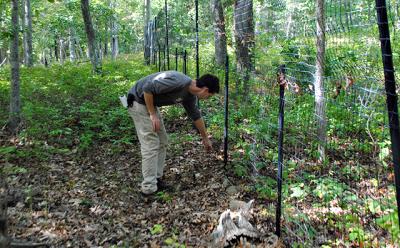Husband of Missing Sagaponack Woman Arrested
Husband of Missing Sagaponack Woman Arrested

The estranged husband of a Sagaponack woman who has been missing nearly a week, has been arrested twice this week in two police jurisdictions, accused of violating an order of protection in place for her.
One day before his 50th birthday, Carlos R. Aucapina was arraigned in East Hampton Town Justice Court Friday on a misdemeanor charge of criminal contempt, related to an incident that took place right before she went missing on Oct. 10.
According to the complaint filed in court by East Hampton Town police, Mr. Aucapina confronted Lilia Aucapina, 40, and Angel Tejada in the parking lot of the Meeting House Lane Medical Practice on Montauk Highway in Wainscott Saturday morning. Mr. Tejada, whose call to the police ended the confrontation, according to his statement, had developed a close friendship with Ms. Aucapina over the past several months. Mr. Tejada accused Mr. Aucapina of being jealous, and said that he had been confronted by him previously.
The Aucapinas are in the process of divorce in the Suffolk County Family Courtroom of Justice Martha L. Luft. Justice Luft issued the order for Mr. Aucapina to stay away from his soon-to-be ex-wife just days earlier.
Mr. Tejada told police that Ms. Aucapina had parked her car at the medical center the evening before, spending the night with him. According to Mr. Tejada, the two were in the parking lot when the confrontation with Mr. Aucapina began.
However, police said “she had no involvement in the altercation.” Mr. Tejada told police that Mr. Aucapina made a phone call when he saw the two, with Ms. Aucapina’s brother soon showing up.
Her brother, Carlos Parra, “started saying bad stuff to Lilia, and he was trying to start a fight with me,” Mr. Tejada said. Mr. Parra was not charged with any crime. Mr. Tejada said he then called police, and Mr. Aucapina and Mr. Parra left.
Police had said Ms. Aucapina was last seen Saturday at the address of the medical center in Wainscott at around 9 a.m. Her children reported her missing to Southampton Town police at 9:20 p.m.
Anthony Rutkowski of Astarita & Associates, PC, Mr. Aucapina’s lawyer, challenged the case against his client during his arraignment in front of East Hampton Town Justice Steven Tekulsky, after being told that the district attorney’s office had asked bail to be set at $10,000. “That seems exorbitant,” he said. “Ms. Aucapina was not involved in the confrontation.”
Mr. Rutkowski said that the defendant had already posted $10,000 bail in Southampton Town Justice Court, which had been posted on his behalf. “He is alleged to have driven past his wife’s house, that he has to drive past,” Mr. Rutkowski said about an earlier alleged violation of the order of protection for Ms. Aucapina. She lives on Toppings Path in Sagaponack, which is in Southampton Town police’s jurisdiction.
Justice Tekulsky did not agree with Mr. Rutkowski’s assessment of the charges, setting bail at $10,000. Several friends and family members of Mr. Aucapina were in the courtroom, and posted the cash bail. Mr. Aucapina was released.
He is due to return to the East Hampton courthouse on Thursday.
Southampton Town police detectives have not said much since Ms. Aucapina's disappearance other than that it was unusual for her to go missing and that searches had taken place by foot with the help of K-9 units, on all-terrain vehicles, and by air. Detective Sgt. Lisa Costa did not immediately return a request for comment on Friday.
WITH REPORTING BY TAYLOR K. VECSEY





